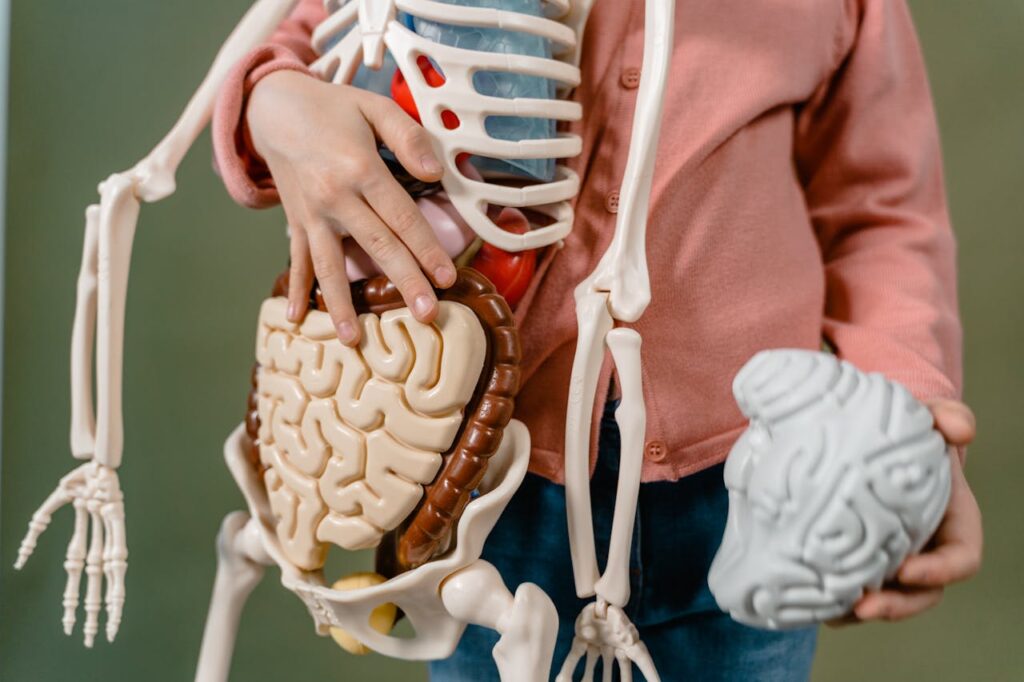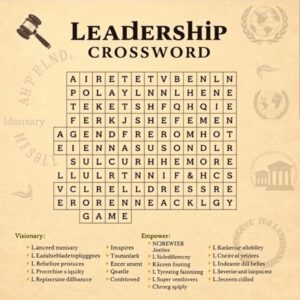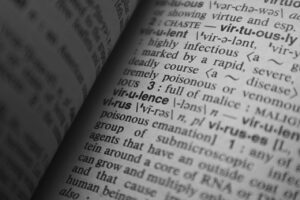
Explore & Play
Discover interesting topics and solve the accompanying crossword puzzle.
Organ crossword | Organs involved in human reproduction
Table of Contents
Organ Crossword
You can either fill in the crossword puzzle directly on this page or click the button in the bottom right corner to print it for free.

Reproductive Health: Exploring the Organs Involved in Human Reproduction
Reproductive health is a critical component of overall well-being, and understanding the organs involved in human reproduction is essential for both prevention and treatment of reproductive issues. The human body contains various complex systems that work together to ensure fertility, conception, and the proper development of offspring. From the heart pumping blood to supply nutrients to the organs to the complex interplay of hormones, reproductive health is closely tied to the function of numerous organs.
In this article, we will explore the key organs involved in human reproduction and how they collaborate to achieve reproductive success. We will also briefly introduce a crossword puzzle that highlights some of these essential organs. By understanding these organs, you can better appreciate their role in both male and female reproductive health.
1. The Male Reproductive System
1.1 Overview of the Male Reproductive System
The male reproductive system is a complex network of organs that work together to produce and deliver sperm. Its primary function is to produce sperm and deliver it to the female reproductive system for fertilization. The system also produces the hormone testosterone, which is responsible for the development of male sexual characteristics and plays a crucial role in sperm production.
The male reproductive organs include the testes, prostate, seminal vesicles, penis, and various other structures that support the process of reproduction. Together, these organs ensure that sperm is produced, matured, and successfully delivered to the female reproductive system.
1.2 The Testes: The Source of Sperm
The testes are crucial for the production of sperm and hormones like testosterone, which are vital for sexual and reproductive health. Sperm production, also known as spermatogenesis, takes place within the seminiferous tubules of the testes. These tiny structures are where sperm cells mature before being released into the epididymis for storage.
In addition to sperm production, the testes are responsible for secreting testosterone, which regulates male sexual function and contributes to the development of secondary sexual characteristics such as body hair, muscle mass, and a deeper voice. This hormone also plays a role in maintaining libido and supporting the maturation of sperm cells.
1.3 The Prostate and Seminal Vesicles
The prostate and seminal vesicles are responsible for producing the seminal fluid that nourishes and protects sperm. The prostate, a small walnut-sized gland located just below the bladder, secretes a fluid that helps nourish sperm, aids in sperm motility, and protects the sperm from the acidic environment of the vagina.
The seminal vesicles, located behind the bladder, produce a sugary fluid that provides energy for the sperm. These fluids, together with sperm, form semen, which is ejaculated during sexual intercourse. The collaboration of the prostate and seminal vesicles is essential in ensuring that sperm has the necessary nutrients and protection to survive during its journey to the egg.
1.4 Other Organs in Male Reproductive Health
Several other organs play vital roles in male reproductive health, including the epididymis and vas deferens. The epididymis is a coiled tube located at the back of the testes where sperm mature and are stored. When ejaculation occurs, sperm travel through the vas deferens, which connects the epididymis to the urethra. The sperm then pass through the prostate and seminal vesicles before being expelled during ejaculation.
2. The Female Reproductive System
2.1 Overview of the Female Reproductive System
The female reproductive system is responsible for producing eggs, supporting fertilization, and nurturing the development of a fetus. Unlike the male reproductive system, which continuously produces sperm throughout life, the female system operates on a cyclical basis, releasing one egg per month during ovulation.
Key organs in the female reproductive system include the ovaries, uterus, fallopian tubes, and cervix. These organs work together in a highly coordinated manner to enable conception, pregnancy, and childbirth. Additionally, the female reproductive system is regulated by a complex hormonal cycle that controls the release of eggs and the preparation of the uterus for implantation.
2.2 The Ovaries: The Source of Eggs
The ovaries are the primary organs responsible for producing eggs (ova) and secreting hormones such as estrogen and progesterone. Each woman is born with a set number of eggs, and only a fraction of these eggs will be released throughout her lifetime. During each menstrual cycle, one egg is typically released from the ovary during ovulation and is then available for fertilization.
Estrogen and progesterone, produced by the ovaries, play vital roles in regulating the menstrual cycle and preparing the body for pregnancy. Estrogen promotes the development of the egg and thickens the lining of the uterus, while progesterone supports the implantation of a fertilized egg and maintains pregnancy.
2.3 The Uterus: A Place for Fetal Development
The uterus is the organ where a fertilized egg implants and develops into a fetus during pregnancy. This hollow, muscular organ is located in the lower abdomen and is lined with a special tissue called the endometrium. The endometrium thickens each month in preparation for the potential implantation of a fertilized egg.
If the egg is fertilized, it travels through the fallopian tubes and implants itself in the endometrium. The uterus then provides a safe and nourishing environment for the growing fetus, offering protection and support during pregnancy. As pregnancy progresses, the uterus expands to accommodate the developing baby.
2.4 The Fallopian Tubes and Fertilization
Fertilization typically occurs in the fallopian tubes, where the sperm meets the egg. These two slender tubes extend from the uterus toward the ovaries and are the primary site where fertilization takes place. After ovulation, the egg is released into the fallopian tube, where it may encounter sperm.
The fallopian tubes play a crucial role in the journey of the egg, as they provide a passage for the fertilized egg to travel back to the uterus for implantation. If fertilization does not occur, the egg dissolves and is absorbed by the body. The fallopian tubes are thus essential for conception, as they connect the ovaries with the uterus and serve as the meeting point for sperm and egg.
2.5 The Cervix: The Gateway to the Uterus
The cervix acts as a barrier between the vagina and the uterus, playing an important role in fertility and childbirth. During ovulation, the cervix produces a special mucus that facilitates the passage of sperm into the uterus. This mucus changes in consistency and texture to help sperm survive their journey to the egg.
During pregnancy, the cervix remains closed to protect the growing fetus, and it softens and dilates in preparation for childbirth. The cervix’s role in regulating sperm entry and its protective function during pregnancy make it an essential organ in female reproductive health.
3. Hormonal Regulation in Reproduction
3.1 The Endocrine System’s Role in Reproduction
Hormones play a pivotal role in regulating reproduction, with several glands working in concert to ensure fertility and successful pregnancy. The endocrine system, which includes the hypothalamus, pituitary gland, thyroid, and adrenal glands, is responsible for producing and regulating the hormones that influence the reproductive organs.
The hypothalamus controls the release of hormones from the pituitary gland, which in turn signals the ovaries and testes to produce their respective hormones. These hormones regulate various processes such as ovulation, sperm production, and the preparation of the uterus for pregnancy.
3.2 The Role of the Pituitary Gland
The pituitary gland controls various other glands and organs, regulating the production of key reproductive hormones. Located at the base of the brain, the pituitary produces follicle-stimulating hormone (FSH) and luteinizing hormone (LH), which are essential for both ovulation in women and sperm production in men.
FSH stimulates the growth of eggs in the ovaries and the production of sperm in the testes, while LH triggers ovulation in women and supports testosterone production in men. The pituitary gland is thus central to the coordination of the reproductive system, ensuring that all organs function harmoniously.
3.3 The Adrenal and Thyroid Glands in Reproduction
The adrenal and thyroid glands, though primarily associated with stress and metabolism, also play a significant role in regulating reproductive health. The adrenal glands produce cortisol, which helps the body respond to stress, and the thyroid produces hormones that regulate metabolism.
Both of these glands have indirect effects on reproductive health. Imbalances in cortisol or thyroid hormone levels can lead to reproductive issues, such as irregular menstrual cycles or reduced fertility. Thus, maintaining the health of these glands is essential for overall reproductive function.
4. The Male and Female Reproductive Organs in Pregnancy
4.1 The Process of Conception
Conception is a miraculous process where sperm meets egg, typically in the fallopian tubes, and begins a journey of development. After ejaculation, sperm travel through the cervix, into the uterus, and into the fallopian tubes where they may fertilize the egg. The fertilized egg, or zygote, then implants in the uterus, where it begins to grow into an embryo and later a fetus.
The male and female reproductive organs must work together in perfect synchrony for conception to occur. This involves the coordinated release of eggs and sperm, the transport of sperm to the egg, and the implantation of the fertilized egg in the uterus.
4.2 Early Stages of Pregnancy
Once pregnancy begins, the fertilized egg implants in the uterus, and various organs must work together to support fetal growth. The uterus begins to prepare for the embryo’s arrival by thickening its lining, while the ovaries produce progesterone to maintain pregnancy.
During the early stages of pregnancy, the cervix remains closed to protect the developing fetus, and the placenta begins to form, providing nutrients and oxygen to the growing baby. As pregnancy progresses, the female reproductive organs continue to adapt to support the baby’s growth.
5. Reproductive Health Challenges
5.1 Common Male Reproductive Health Issues
Men can face several challenges that affect reproductive health, including low sperm count, erectile dysfunction, and prostate issues. Low sperm count or poor sperm quality can make it more difficult to conceive, while erectile dysfunction can impact the ability to engage in intercourse.
Prostate problems, such as benign prostatic hyperplasia (BPH) or prostate cancer, can also affect fertility and sexual function. Regular checkups and medical interventions can help identify and treat these conditions early, ensuring better reproductive health outcomes.
5.2 Female Reproductive Health Issues
Women also experience various reproductive health challenges, such as polycystic ovary syndrome (PCOS), endometriosis, and cervical cancer. PCOS can lead to irregular periods, hormonal imbalances, and difficulty conceiving. Endometriosis, a condition where tissue similar to the uterine lining grows outside the uterus, can cause pain and fertility issues.
Cervical cancer, often caused by human papillomavirus (HPV), can be prevented through regular screenings and vaccination. Early detection and treatment of these conditions can improve reproductive health and fertility.
5.3 The Importance of Regular Checkups
Regular checkups and screenings are crucial in identifying and treating reproductive health issues early on. Annual exams for both men and women, including screenings for prostate, cervical health, and overall reproductive function, can help detect issues before they become more serious.
6. Final Thoughts: A Healthy Reproductive Life
Reproductive health is a key aspect of overall well-being, and understanding the organs and systems involved is crucial to maintaining a healthy reproductive life. With advancements in medical research and regular checkups, many reproductive health issues can be addressed effectively, helping both men and women lead healthy, fulfilling lives.
We hope this article has provided a comprehensive look at the organs involved in human reproduction and how they work together. To test your knowledge and dive deeper into these essential organs, play our Reproductive Organs Crossword now!
Share to...
I hope you enjoy the content.
Want to receive our daily crossword puzzle or article? Subscribe!
You may also be interested in
Share to…
Want to receive our daily crossword puzzle?
-
Jigsaw Puzzles
Chinese Zodiac Rabbit Jigsaw Puzzle – Ink Art Series 250 | 300 | 500 Pieces
kr 348,00 – kr 439,00Price range: kr 348,00 through kr 439,00 Select options This product has multiple variants. The options may be chosen on the product page -
Jigsaw Puzzles
Majestic Unicorn Watercolor Puzzle 250 | 300 | 500 Brikker
kr 348,00 – kr 439,00Price range: kr 348,00 through kr 439,00 Select options This product has multiple variants. The options may be chosen on the product page -
Jigsaw Puzzles
Zodiac Series Tiger Ink Puzzle – Black and White Art 250 | 300 | 500 Pieces
kr 348,00 – kr 439,00Price range: kr 348,00 through kr 439,00 Select options This product has multiple variants. The options may be chosen on the product page

















